Journal Description
Aquaculture Journal
Aquaculture Journal
is an international, peer-reviewed, open access journal on aquaculture-related aquatic science published quarterly online by MDPI.
- Open Access— free for readers, with article processing charges (APC) paid by authors or their institutions.
- Rapid Publication: first decisions in 16 days; acceptance to publication in 5.8 days (median values for MDPI journals in the second half of 2023).
- Recognition of Reviewers: APC discount vouchers, optional signed peer review, and reviewer names published annually in the journal.
Latest Articles
Single-Cell Transcriptome Profiling of Scale Drop Disease Virus-Infected Asian Seabass (Lates calcarifer)
Aquac. J. 2024, 4(2), 28-43; https://doi.org/10.3390/aquacj4020003 - 07 Apr 2024
Abstract
►
Show Figures
The study aims to characterize the immune cell landscape in convalescent Asian seabass (Lates calcarifer) blood samples after exposure to scale-drop disease virus (SDDV). Traditional immunophenotyping approaches used in human and mouse studies are impractical for non-model organisms like the Asian
[...] Read more.
The study aims to characterize the immune cell landscape in convalescent Asian seabass (Lates calcarifer) blood samples after exposure to scale-drop disease virus (SDDV). Traditional immunophenotyping approaches used in human and mouse studies are impractical for non-model organisms like the Asian seabass due to the lack of specific antibody-based reagents. To overcome this challenge, 10x Genomics single-cell RNA sequencing was employed. The analysis of blood samples revealed 24 distinct leukocyte clusters, with elevated proportions of B cells, granulocytes, and T cells in the convalescent group compared to the uninfected group. While distinguishing granulocyte and macrophage subsets was challenging, the analysis of differential gene expression in the macrophage population indicated that the upregulated genes were linked to inflammatory processes. Specific T cell clusters showed notable expressions of cd4-1, cd8a, perforin-1 and il-2rβ, suggesting the presence of CD4+ T helper (Th), CD8+ cytotoxic T (Tc) cells, immature T cells, and naive T cells. Attempts to categorize CD4+ T cells into Th subtypes lacked clear distinctions, while CD8+ T cells exhibited three clusters, predominantly Tc1 cells. Furthermore, comparisons between convalescent and uninfected groups revealed increased percentages of activated and antibody-secreting B cells in the convalescent group. This single-cell analysis provides vital insights into the immune cell dynamics in convalescent and uninfected Asian seabass, providing valuable information on potential immune responses to SDDV infection.
Full article
Open AccessArticle
Skill Development in Current and Future Workers to Thrive in the Digital Aquaculture Industry
by
Nicole McDonald, Kristen Lovric and Amy Cosby
Aquac. J. 2024, 4(1), 15-27; https://doi.org/10.3390/aquacj4010002 - 15 Mar 2024
Abstract
The digitisation of the agriculture industry provides an opportune context for accelerating sustainable food production. Aquaculture is among the fastest-growing agriculture sectors and is well placed to help address food supply shortages, directly contributing to the achievement of UN Sustainable Development Goal 2.
[...] Read more.
The digitisation of the agriculture industry provides an opportune context for accelerating sustainable food production. Aquaculture is among the fastest-growing agriculture sectors and is well placed to help address food supply shortages, directly contributing to the achievement of UN Sustainable Development Goal 2. However, the sector currently has inadequate digital capability and enabling conditions to thrive. Social cognitive career theory asserts that career choices and persistence are directly influenced by a person’s thoughts, including their self-efficacy; therefore, the upskilling and reskilling of labour is required to build confidence in their digital capabilities and reduce turnover intentions. Consequently, this study sought to identify the key skills and needs for this workforce to transition to digitally driven ways of working. The results indicated that a range of skills and abilities that enable people to improve their digital capabilities were required. The findings are presented and discussed.
Full article
Open AccessArticle
Comparative Analysis of the Culture of Pink Shrimp Farfantepenaeus brasiliensis and Pacific White Shrimp Litopenaeus vannamei in Biofloc System
by
Dariano Krummenauer, André Freitas da Silva, Missileny Xavier, Geraldo Kipper Foes, Luís H. Poersch, Alessandro Cardozo and Wilson Wasielesky
Aquac. J. 2024, 4(1), 1-14; https://doi.org/10.3390/aquacj4010001 - 08 Feb 2024
Abstract
►▼
Show Figures
Shrimp farming in the Biofloc Technology System (BFT) is already considered an alternative to the traditional culture. The bioflocs maintain the water quality and can be used as a food supplement for shrimp. The Pacific white shrimp Litopenaeus vannamei forms the basis for
[...] Read more.
Shrimp farming in the Biofloc Technology System (BFT) is already considered an alternative to the traditional culture. The bioflocs maintain the water quality and can be used as a food supplement for shrimp. The Pacific white shrimp Litopenaeus vannamei forms the basis for most of the production in BFT. However, its culture is limited by the low temperatures. Thus, the BFT culture potential of native species, such as the pink shrimp Farfantepenaeus brasiliensis, should be considered. The present study aimed to compare the cultures of F. brasiliensis and L. vannamei in the grow-out phase in the BFT system. The experiment comprised two treatments: (FB), grown out of F. brasiliensis, and (LV), grown out of L. vannamei. The study lasted 70 days and was conducted at the Marine Station of Aquaculture at the Federal University of Rio Grande, Rio Grande do Sul State, Brazil. The stocking density was 100 shrimp/m² for both species. The shrimp were fed twice a day with commercial food. The physicochemical parameters of the water were monitored throughout the experimental period. The results showed that all physicochemical parameters of the water remained within the tolerated limits for both species. However, during the growth phase in the BFT, it was observed that the L. vannamei shrimp showed a better zootechnical performance than F. brasiliensis. The results indicate that L. vannamei has a higher capacity to catch bioflocs as supplementary food, demonstrating a better response of that species to the BFT system in the grow-out phase compared to F. brasiliensis.
Full article
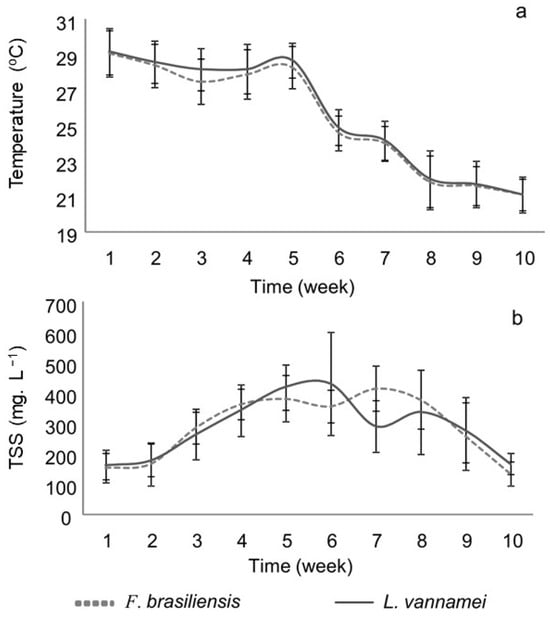
Figure 1
Open AccessArticle
Effects of Dietary Sodium Propionate on Growth, Digestive Enzyme Activity, and Expression of Immune System Genes in Juveniles of Tropical Gar (Atractosteus tropicus)
by
Jesús G. Arellano-Carrasco, Rafael Martínez-García, Alberto Asiain-Hoyos, Juan L. Reta-Mendiola, Pablo Díaz-Rivera, Susana A. Frías-Gómez, Talhia Martínez-Burguete, Gloria Gertrudys Asencio-Alcudia, Luis Daniel Jiménez-Martínez, Rocio Guerrero-Zarate, Cesar A. Sepúlveda-Quiroz and Carlos A. Álvarez-González
Aquac. J. 2023, 3(4), 227-237; https://doi.org/10.3390/aquacj3040018 - 20 Nov 2023
Abstract
We determined the effects of sodium propionate (SP) added to the diets of Atractosteus tropicus juveniles with respect to the growth, survival, digestive enzyme activity, and expression of genes that are associated with the immune system. Five treatments (0, 0.5, 1.0, 1.5, and
[...] Read more.
We determined the effects of sodium propionate (SP) added to the diets of Atractosteus tropicus juveniles with respect to the growth, survival, digestive enzyme activity, and expression of genes that are associated with the immune system. Five treatments (0, 0.5, 1.0, 1.5, and 2.0%) were evaluated in triplicate on 180 fish (3.65 ± 0.12 g) distributed among 15 (70 L) tanks. The juveniles were fed five times a day with 5% feed in relation to the biomass of the organism. The treatment with 0.5% SP showed a final weight value of 25.7 ± 4.5 g, absolute weight of gain (AWG) of 21.93 ± 4.39 g, and specific growth rate (SGR) of 3.1 ± 0.26. Treatments with 1.5 and 2.0% SP showed the highest survival (91.6%). The control group (0%) showed a greater activity of lipases. There was a tendency that the highest activity of alkaline proteases and chymotrypsin occurred in the 0 and 0.5% treatments. The maximum relative expression of the genes ocln, muc2, and nod2 occurred in the 1.5% treatment. The inclusion of SP in the diet of A. tropicus juveniles could benefit the activity of some digestive enzymes as well as the expression of genes related to the function of the intestinal barrier, therefore benefitting the survival of the organisms.
Full article
(This article belongs to the Topic Feeding Strategies to Improve Sustainability and Welfare in Fish and Poultry Production)
►▼
Show Figures
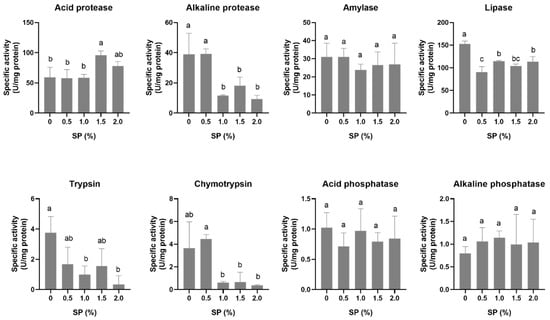
Figure 1
Open AccessArticle
Larviculture of Brycon amazonicus under Different Food and Farming Systems
by
Gustavo Alberto Arbeláez-Rojas and Maria da Graça Gama Melão
Aquac. J. 2023, 3(4), 209-226; https://doi.org/10.3390/aquacj3040017 - 14 Oct 2023
Abstract
Freshwater fish larviculture techniques still have deficiencies in cultivation and feeding. In this study, we evaluated experimentally different cultivation and feeding systems in the Brycon amazonicus (matrinxã) larviculture. Seven treatments with different live foods were used: T1 = a semi-intensive mesocosm system with
[...] Read more.
Freshwater fish larviculture techniques still have deficiencies in cultivation and feeding. In this study, we evaluated experimentally different cultivation and feeding systems in the Brycon amazonicus (matrinxã) larviculture. Seven treatments with different live foods were used: T1 = a semi-intensive mesocosm system with green water; T2 = a clear water system containing Artemia sp. as food; T3 = a clear water system containing Dendrocephalus brasiliensis as food; T4 = a clear water system containing a combination of Artemia sp. and D. brasiliensis as food (a proportion of 1:1); T5, T6 and T7 were the same as T2, T3 and T4, respectively, but with a swimming exercise system. During the experiment, the water quality parameters were measured and maintained suitably for the cultures. The highest values of final weight (42.97 ± 2.58 mg) and specific growth rate (31.77 ± 0.60%) were observed in T5 (p < 0.05). Regarding the nutritional composition, the larvae of B. amazonicus that were fed nauplii of D. brasiliensis had a better profile of amino acids and essential fatty acids than those fed other live foods. Therefore, nauplii of D. brasiliensis can be used as an adequately nutritional food for larvae of B. amazonicus.
Full article
(This article belongs to the Special Issue Marine Fish Larval Nutrition)
►▼
Show Figures
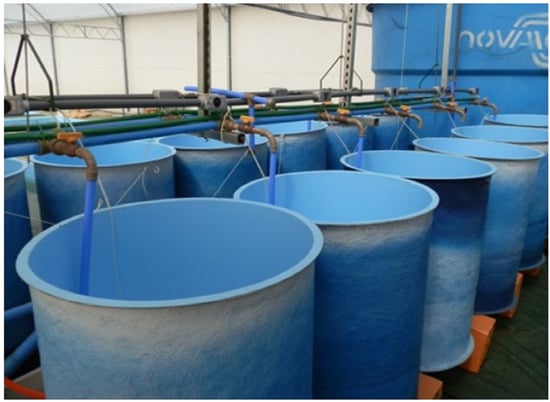
Figure 1
Open AccessArticle
Induced Sex Reversal in Adult Males of the Protandric Hermaphrodite Centropomus undecimalis Using 17 β-Estradiol: Enhancing Management Strategies for Captive Broodstock
by
María de Jesús Contreras-García, Wilfrido Miguel Contreras-Sánchez, Manuel Mendoza-Carranza, Alejandro Mcdonal-Vera and Leonardo Cruz-Rosado
Aquac. J. 2023, 3(3), 196-208; https://doi.org/10.3390/aquacj3030016 - 25 Aug 2023
Abstract
►▼
Show Figures
The common snook (Centropomus undecimalis) is a protandric hermaphrodite fish that undergoes a sex change during its life cycle. In nature, common snook females develop directly from males shortly after spawning. However, the factors triggering this process remain unknown. This knowledge
[...] Read more.
The common snook (Centropomus undecimalis) is a protandric hermaphrodite fish that undergoes a sex change during its life cycle. In nature, common snook females develop directly from males shortly after spawning. However, the factors triggering this process remain unknown. This knowledge gap poses challenges for managing the species in captivity. To address this, we conducted a study on sex change induction in three-year-old males using estradiol and evaluated the potential effects of photoperiod manipulation on early maturation. Four treatment groups were employed: (1) fish with estradiol + natural photoperiod; (2) fish without estradiol + natural photoperiod; (3) fish without estradiol + controlled photoperiod; and (4) fish with estradiol + controlled photoperiod. The effectiveness of these treatments was assessed through histological procedures, which allowed for the examination of the fishes’ gonads. Furthermore, the concentration of alkali labile phosphorus in fish plasma was measured and correlated with the histological results. Our findings revealed that administering 2 mg/kg estradiol implants resulted in a remarkable 100% female population within the estradiol-treated groups. No significant effect on fish maturation was observed due to the manipulated photoperiod conditions. This protocol offers improved management strategies for captive broodstock. Firstly, the concentration of estradiol used in this study proved sufficient to induce sex change in this hermaphroditic species, enabling the production of viable females at an early age and smaller size and facilitating easier broodstock manipulation. Secondly, the implementation of the alkali labile phosphorus technique allows for sex identification without the need to sacrifice the fish. In conclusion, our study provides valuable insights into sex change induction and photoperiod manipulation in common snook. The findings contribute to enhanced management practices for captive broodstock. However, further research is needed to explore the underlying mechanisms triggering sex change and to optimize protocols for long-term maintenance and successful reproduction in captivity.
Full article
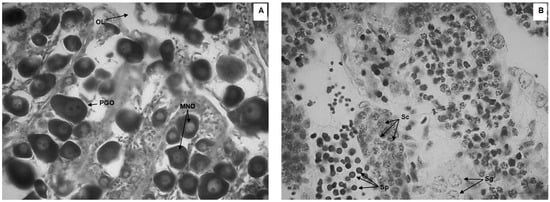
Figure 1
Open AccessEditor’s ChoiceArticle
Hydrodynamic Model Tests for Seaweed as a Source of Energy Reduction during Extreme Events
by
Olanrewaju Sulaiman Oladokun
Aquac. J. 2023, 3(3), 181-195; https://doi.org/10.3390/aquacj3030015 - 14 Jul 2023
Abstract
One fifth of the world’s population and critical infrastructures are close to the coast and regions of high-risk sea level rise elevation. The last decades have been characterized by increasing extreme events, including storm surges, flooding, coastal erosion, enhanced coastal vulnerability with associated
[...] Read more.
One fifth of the world’s population and critical infrastructures are close to the coast and regions of high-risk sea level rise elevation. The last decades have been characterized by increasing extreme events, including storm surges, flooding, coastal erosion, enhanced coastal vulnerability with associated livelihood, and economic losses. Nature-based engineering solutions are being adopted as sustainable solutions for helping existing technologies live their design life and providing climate change adaptation and resilience for coastal and riverine communities. This paper involves the investigation of nature-based eco-hydraulic soft coastal engineering to cultivate seaweed for coastal protection. In this context, the present study involves an advanced risk evaluation performed by conducting an extreme bore interaction with seaweed as a soft engineering coastal protection measure. The load reduction on the inland structure during extreme flooding conditions, incorporating seaweed, is addressed. The present study indicates that the load on inland structures can be reduced by as much as 14% in extreme flooding conditions in the presence of seaweed with two rows of seaweed, indicating the usage of seaweed as a part of coastal protection over existing site protection infrastructure for improved coastal mitigation.
Full article
(This article belongs to the Special Issue Feature Papers in Aquaculture 2022)
►▼
Show Figures

Figure 1
Open AccessArticle
L-Tryptophan Mitigates Cannibalism and Improves Growth of Asian seabass, Lates calcarifer Reared in a RAS System
by
Md. Shahzad Kuli Khan, Krishna R. Salin, Amararatne Yakupitiyage, Takuji W. Tsusaka, Loc Thai Nguyen and Mohammad Abdul Momin Siddique
Aquac. J. 2023, 3(3), 168-180; https://doi.org/10.3390/aquacj3030014 - 23 Jun 2023
Cited by 1
Abstract
►▼
Show Figures
Severe cannibalism can result in a significant loss of productivity during the nursery phase of Asian seabass, Lates calcarifer. The present study aimed to determine the effect of dietary tryptophan on growth, feed utilization, cannibalism, survival, and muscle proximate composition of Asian
[...] Read more.
Severe cannibalism can result in a significant loss of productivity during the nursery phase of Asian seabass, Lates calcarifer. The present study aimed to determine the effect of dietary tryptophan on growth, feed utilization, cannibalism, survival, and muscle proximate composition of Asian seabass juveniles (initial size, 2.77 ± 0.04 cm in length and 0.29 ± 0.01 g in weight) in a recirculating aquaculture system (RAS) at different stocking densities. The tryptophan levels were set at 0.41% (control diet, standard dosage for normal growth and survival of Asian seabass), 1.00% (Diet 1), and 1.50% (Diet 2), while the stocking densities were set at 0.5 ind./L and 1.5 ind./L. The results indicated that dietary supplementation with L-tryptophan (TRP) and fish stocking density had a significant effect on fish growth parameters, feed utilization, cannibalism, survival, and muscle lipid content (p < 0.05) over the 45-day trial. The maximum length, weight, WG, and SGR were 11.64 ± 0.35 cm, 22.93 ± 2.67 g, 22.64 ± 2.67 g, and 9.63 ± 0.27%, respectively, in the fish fed Diet 2, and 11.35 ± 0.22 cm, 24.38 ± 1.28 g, 24.09 ± 1.28 g, and 9.82 ± 0.11% at a 1.5 ind./L stocking density. The lower FCR (0.81 ± 0.04) and higher PER (2.98 ± 0.16) ensured better utilization of Diet 1 than the other diets. Moreover, significant interaction effects between diet and stocking density were observed in total yield, cannibalism, and survival of the Asian seabass. Significantly higher survival rates of 76.11 ± 3.90% in the Diet 1 group and 76.28 ± 2.88% in 0.5 ind./L stocking density were obtained, which is promising. The study concludes that dietary supplementation with 1.00% TRP was effective in reducing cannibalism and increasing the survival of the Asian seabass nursery reared in RAS at a lower stocking density (i.e., 0.5 ind./L), whereas 1.50% supplemental TRP at a higher stocking density (i.e., 1.5 ind./L) significantly increased the cannibalism and growth, which in turn reduced the survival rate.
Full article
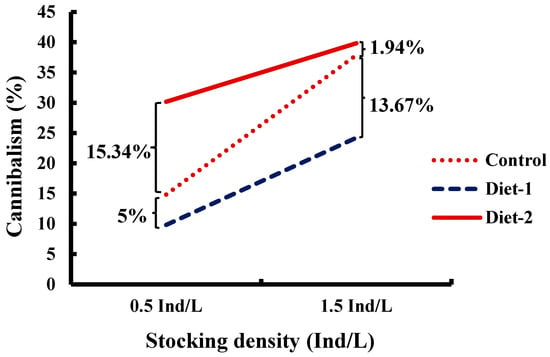
Figure 1
Open AccessArticle
Prospecting the Photosynthetic Flatworm Symsagittifera roscoffensis as a Novel Fish-Feed
by
Nathan J. Thomas, Kam W. Tang and Christopher J. Coates
Aquac. J. 2023, 3(2), 149-167; https://doi.org/10.3390/aquacj3020013 - 26 May 2023
Cited by 2
Abstract
►▼
Show Figures
Symsagittifera roscoffensis is an intertidal Acoel flatworm that forms a symbiotic relationship with the alga Tetraselmis convolutae. Members of the genus Tetraselmis are known to have a high nutritional value and have been widely used to enrich intermediate prey for fish within
[...] Read more.
Symsagittifera roscoffensis is an intertidal Acoel flatworm that forms a symbiotic relationship with the alga Tetraselmis convolutae. Members of the genus Tetraselmis are known to have a high nutritional value and have been widely used to enrich intermediate prey for fish within the aquaculture industry; therefore, S. roscoffensis could be a good candidate as a trophic shortcut to deliver algal nutrition to fish. In this study, we investigated the likelihood of five ornamental tropical freshwater and six ornamental marine fishes to consume this worm, either as live feed or in freeze-dried form. We also tested the ability of S. roscoffensis to form a symbiotic relationship with alternative algal species, analysing the nutritional profile of S. roscoffensis when grown in different media. All the experimental fish consumed live worms to some degree, with the exception of one species (Meiacanthus grammistes); the response time to the worms ranged from 1.1–68.6 s for freshwater ornamental species to 1–24 s for marine ornamental species, and in most cases, this was comparable to or shorter than their response time to the reference diet Artemia. The fishes showed no negative effects after consuming the worms. We obtained similar results with freeze-dried worms in terms of the number of worms eaten, response time, and feeding time. Symsagittifera roscoffensis was able to form a symbiotic relationship with all the tested algal species of the genus Tetraselmis, but not with members of other genera. Worms grown in nutrient media (f/2 and f/4) had significantly higher contents of protein, pigments, and total and polyunsaturated fatty acids, including eicosapentaenoic acid (20:5n − 3) and α-linolenic acid (18:3n − 3), than those grown in seawater. These results show that S. roscoffensis was acceptable to many ornamental fish species, delivering key algal ingredients that are beneficial to fish health; hence, it is a promising alternative to conventional fish feeds for the ornamental pet trade.
Full article
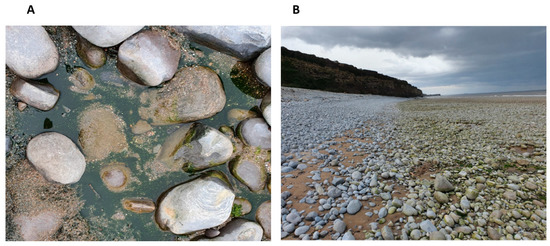
Figure 1
Open AccessArticle
Morphological Diversity of Different Male Morphotypes of Giant Freshwater Prawn Macrobrachium rosenbergii (De Man, 1879)
by
Salifu Ibrahim, Zhenxiao Zhong, Xuan Lan, Jinping Luo, Qiongying Tang, Zhenglong Xia, Shaokui Yi and Guoliang Yang
Aquac. J. 2023, 3(2), 133-148; https://doi.org/10.3390/aquacj3020012 - 16 May 2023
Abstract
The giant freshwater prawn (GFP), Macrobrachium rosenbergii, is one of the largest palaemonids in the world, found in tropical marine, estuarine, and freshwaters, and is among the most commercially cultured crustaceans. According to research, mature males usually develop differences in cheliped morphology, growth
[...] Read more.
The giant freshwater prawn (GFP), Macrobrachium rosenbergii, is one of the largest palaemonids in the world, found in tropical marine, estuarine, and freshwaters, and is among the most commercially cultured crustaceans. According to research, mature males usually develop differences in cheliped morphology, growth characteristics, and agonistic behavior. The identification of such morphotypes is critical for effectively managing and handling prawns. The present study aimed to describe the GFP male population structure in culture ponds (the Yangtze River delta, China). Sixteen morphometric traits and four weight data were measured for each four male morphotype. Principal component and clustering analyses were conducted to investigate the morphological variation among the four morphotypes. The study of relative growth was also employed to estimate the growth patterns of body structures (dependent variables) in relation to the carapace length (independent variable). A detailed description of the cheliped’s macroscopic characteristics that differed among morphotypes was provided, which corroborated with previous studies of the species. The four morphotypes were statistically different regarding the cheliped morphology, size, and morphometric relationships and equations, indicating a considerable variation in growth among the four male morphotypes. The present results contribute to a clear understanding of the population biology of GFP and support future management and broodstock selection activities.
Full article
(This article belongs to the Special Issue Recent Advances in Freshwater Prawn Breeding and Culture)
►▼
Show Figures
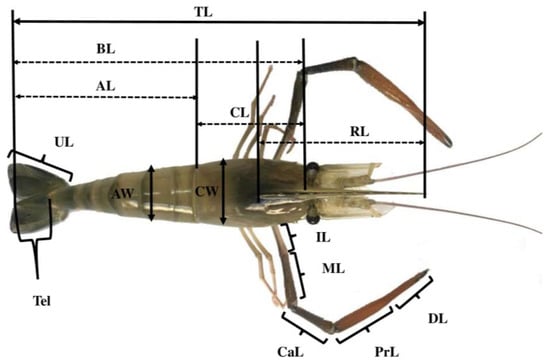
Figure 1
Open AccessArticle
Effects of Rearing Density, Substrate Height, and Feeding Frequency on Growth and Biomass Production of Hediste diversicolor
by
Inmaculada Rasines, Ignacio Eduardo Martín and Felipe Aguado-Giménez
Aquac. J. 2023, 3(2), 121-132; https://doi.org/10.3390/aquacj3020011 - 21 Apr 2023
Abstract
The polychaete Hediste diversicolor is a suitable species for industrial aquaculture; however, cost-effective culture techniques need to be developed for its intensive production. The aim of this study is to evaluate the effects of worm density and substrate height and their interaction, as
[...] Read more.
The polychaete Hediste diversicolor is a suitable species for industrial aquaculture; however, cost-effective culture techniques need to be developed for its intensive production. The aim of this study is to evaluate the effects of worm density and substrate height and their interaction, as well as feeding frequency, on the rearing performance of H. diversicolor. Two trials were conducted. In trial 1, the effects of two substrate heights—6 and 12 cm—and two rearing densities—1000 and 4000 individuals m−2—were assessed in terms of worm growth and biomass production. Worm initial wet weight was 48 mg, and specimens were fed with commercial fish feed during a 70-day assay. The results show no interaction between rearing density and substrate height, and confirm density as a key factor in growth; however, a density of 4000 individuals m−2 results in a significant increase in production (final biomass three times higher for the highest rearing density) without affecting survival. In trial 2, the effect of three levels of feeding frequency—seven days a week; three times a week; and once a week—on growth in individuals of three weight classes—small (25–50 mg); medium (100–150 mg); large (250–350 mg)—was evaluated in a 15-day growing assay. Feeding frequency showed a major influence on the smallest size class, with the best growth indicators obtained at the highest feeding frequency. This study shows that Hediste diversicolor can be reared at a high stocking density to obtain a higher biomass production, and that feeding frequency must be considered as an important factor and adapted to the culture phase.
Full article
(This article belongs to the Special Issue Feature Papers in Aquaculture 2022)
►▼
Show Figures
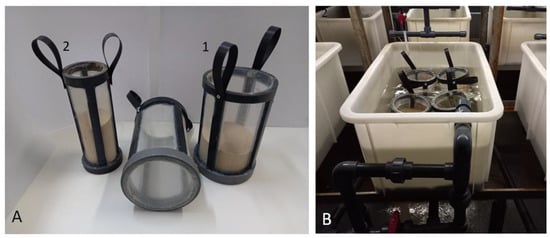
Figure 1
Open AccessEditor’s ChoiceArticle
Suitability of Different Live Feed for First Feeding of Freshwater Fish Larvae
by
Franz Lahnsteiner, Elias Lahnsteiner and Anna Duenser
Aquac. J. 2023, 3(2), 107-120; https://doi.org/10.3390/aquacj3020010 - 21 Apr 2023
Cited by 5
Abstract
►▼
Show Figures
First feeding of many fish larvae depends on live feed. A comparative investigation on the effectiveness of different types of live feed is not available to our knowledge. Hence, we conducted a study to examine the effect of different types and combinations of
[...] Read more.
First feeding of many fish larvae depends on live feed. A comparative investigation on the effectiveness of different types of live feed is not available to our knowledge. Hence, we conducted a study to examine the effect of different types and combinations of live feed on the performance (survival rate, total length, body width, body mass, malformation rate) of pikeperch, Sander lucioperca, larvae. From day 0 (onset of exogenous feeding) to day 10, the saltwater rotifer Brachionus plicatilis, the freshwater rotifer Brachionus calyciflorus, the ciliate Paramecium bursaria, copepods (nauplii and copepodites) from a lake population, and Artemia nauplii were tested. Feeding with B. plicatilis, B. calyciflorus, and P. bursaria resulted in high survival rates of 80% and a homogenous and significant growth (increase in total length of 50% and in body width of 20%). As follow-up feed, copepod nauplii and Artemia nauplii were tested from day 11 to day 20. Copepod nauplii were superior to Artemia nauplii, as larvae fed with copepods showed higher survival rates (67–70% versus 38–47%) and a more homogeneous growth. A switch from seawater live feed to freshwater live feed or vice versa resulted in decreased survival rates. Therefore, a feeding regime consisting of B. calyciflorus or P. bursaria followed by copepods is considered optimal as first feed of pikeperch. The malformation rate was not affected by the tested feeding regimes. To investigate the wider applicability and transferability of these findings, complementary investigations were performed on burbot, Lota lota, and the freshwater whitefish Coregonus atterensis. The feeding regimes used for S. lucioperca larvae were also suitable for Lota lota. Moreover, L. lota could be fed with lake copepods from the onset of exogenous feeding. For C. atterensis, initial feeding with B. plicatilis, B. calyciflorus, or P. bursaria had no positive effects. Feeding with copepods from the onset of exogenous feeding was optimal considering survival rate and growth. Therefore, optimal first feeding regimes are very species specific and should be established for each new species.
Full article
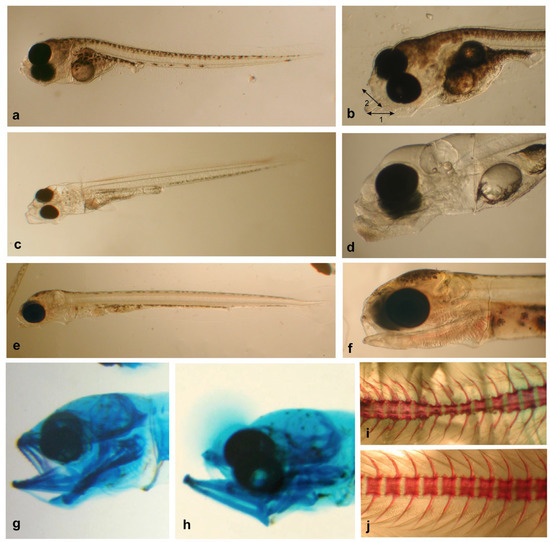
Figure 1
Open AccessEditor’s ChoiceReview
The Prevalence of Viruses Related to the Production of Mussels and Oysters in Saldanha Bay: A Systematic Review
by
Likentso Sylvia Shuping, Izanne Susan Human, Jan Frederik Rykers Lues and Arnelia Natalie Paulse
Aquac. J. 2023, 3(2), 90-106; https://doi.org/10.3390/aquacj3020009 - 13 Apr 2023
Cited by 1
Abstract
The disposal of treated and untreated sewage near shellfish harvesting areas is a global concern. Discharged sewage may be contaminated with enteric viruses present in human faeces. Bivalve molluscs, in turn, act as vectors for enteric viruses through bioaccumulation and retention of these
[...] Read more.
The disposal of treated and untreated sewage near shellfish harvesting areas is a global concern. Discharged sewage may be contaminated with enteric viruses present in human faeces. Bivalve molluscs, in turn, act as vectors for enteric viruses through bioaccumulation and retention of these viruses during the filter-feeding process, resulting in outbreaks of infections due to the consumption of contaminated shellfish. This review was conducted using peer-reviewed articles published from 2012 until September 2022, obtained from online databases such as Google Scholar, Scopus, and Science Direct, highlighting the challenges that the shellfish industry is faced with concerning pollutants ending up in the shellfish production areas. Developed countries have made some advancements by upgrading sewage infrastructures, which reduced viral loads in sewage. However, it is difficult to measure the significance of these improvements, as there are no regulations in place which stipulate the permissible limits for viruses. In most developing countries, including South Africa, there is a lack of effective management plans for virus monitoring in shellfish harvesting areas. The findings of this study indicated a need for extensive research on the origin of viruses, their interactions with other organisms within the marine ecosystem, the quantification of viruses within the Saldanha Bay harbour, and the development of virus management plans which currently are non-existent.
Full article
(This article belongs to the Topic Future Foods from the Sea)
►▼
Show Figures
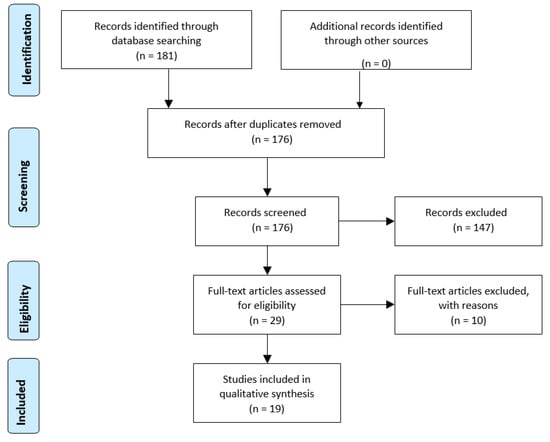
Figure 1
Open AccessArticle
Assessment of Embryonic and Larval Development of Nile Tilapia under the Traditional and Re-Circulatory Thermostatic System in Relation to Climatic and Water Quality Variations
by
Mohammad Abu Baker Siddique, Balaram Mahalder, Mohammad Mahfujul Haque, Abul Bashar, Md. Mahmudul Hasan, Mobin Hossain Shohan, Md. Mahamudun Naby Talukdar, Jatish Chandra Biswas and A. K. Shakur Ahammad
Aquac. J. 2023, 3(2), 70-89; https://doi.org/10.3390/aquacj3020008 - 27 Mar 2023
Cited by 3
Abstract
Embryonic and larval development of tilapia (Oreochromis niloticus) is very vulnerable to climate change. This study was conducted for an assessment of the embryonic and larval development of Nile tilapia in traditional hatchery and re-circulatory thermostatic systems. Daily changes in embryonic
[...] Read more.
Embryonic and larval development of tilapia (Oreochromis niloticus) is very vulnerable to climate change. This study was conducted for an assessment of the embryonic and larval development of Nile tilapia in traditional hatchery and re-circulatory thermostatic systems. Daily changes in embryonic and larval development were measured through microscopic observation and image analysis in the laboratory. Climatic data and water quality parameters were measured every day using appropriate devices. Water temperature was varied with room temperature at the traditional hatchery system while it was maintained at 28.50 °C in the re-circulatory thermostatic system. A total of 200 unhatched eggs were stocked in every three trays of both systems. The egg diameters of the gastrula, segmentation, and pharyngula stages were measured at higher (2261.47 ± 81.66 µm, 2646.24 ± 17.98 µm, and 2710.90 ± 16.60 µm) in the re-circulatory thermostatic system than in the traditional hatchery system (2261.07 ± 81.52 µm, 2645.47 ± 18.24 µm, and 2710.01 ± 16.45 µm), respectively. For both systems, egg colors, egg size, black pigments, germinal ring, eye shape, tail, and heartbeat were determined through microscopic observation. Higher hatching and survival rates were found under the re-circulatory thermostatic system (95% and 97%) than under the traditional hatchery system (85% and 81%). About 6 h less hatching time was required under the re-circulatory thermostatic system than under the traditional system. At the end of 30 DAH (Days After Hatching), larval length and weight under the re-circulatory thermostatic system were found to be higher (15.736 ± 0.424 mm and 0.0528 ± 0.004 g) than under the traditional hatchery system (15.518 ± 0.415 mm and 0.050 ± 0.004 g), respectively. Larval growth patterns for both systems were found to have an exponential trend. PCA analysis revealed that two components were identified, one primarily associated with morphometric characteristics and the other with climatic and water quality parameters. These components showed that there were several interrelationships between the morphometric changes and the climatic and water quality parameters. The characteristic changes of larval development under the re-circulatory thermostatic system and the traditional hatchery system were found to be remarkably similar except for some deformities denoted under the traditional hatchery system. The changes of yolk sac, body pigmentation, dorsal and caudal fin shape, eye size, and head length and width were determined from 1 DAH to 30 DAH. After absorbing the yolk sac, ready-made feed was provided. The water temperature was varied from 30.50 °C to 35.50 °C in the traditional hatchery system. The highest air temperature and humidity were 33.87 °C and 69.94% while the lowest were 29.63 °C and 45.62%, respectively, in the traditional hatchery system. There has been no such comprehensive comparative study on hatchery production in Bangladesh, and therefore, further research might be carried out on broader aspects. This research would be highly beneficial for improving seed production at the tilapia fish hatchery level in the country.
Full article
(This article belongs to the Special Issue Feature Papers in Aquaculture 2022)
►▼
Show Figures
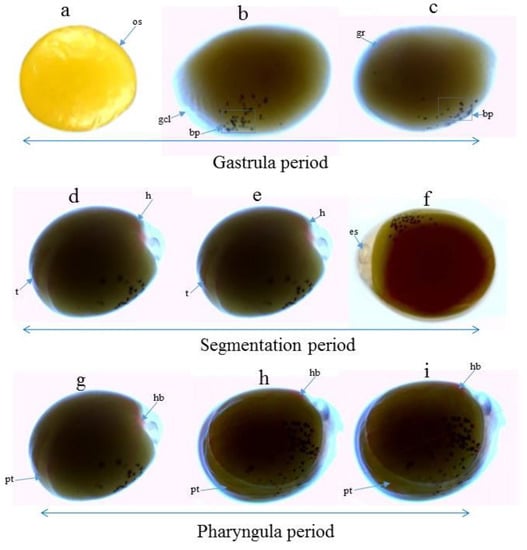
Figure 1
Open AccessArticle
Evaluation of an Organically Modified Clinoptilolite (OMC) and a Multi-Component Mycotoxin Detoxifying Agent (MMDA) on Survival, Growth, Feed Utilization and Disease Resistance of Nile Tilapia (Oreochromis niloticus) Fingerlings Fed with Low Aflatoxin
by
Ram C. Bhujel, Anusha D. Perera, Nemanja Todorović, Jog Raj, Rui A. Gonçalves and Marko Vasiljević
Aquac. J. 2023, 3(1), 56-69; https://doi.org/10.3390/aquacj3010007 - 15 Mar 2023
Abstract
►▼
Show Figures
Mycotoxins have become a serious issue in the animal feed industry and have also affected the aquaculture industry. Mycotoxins can create serious health problems in aquatic and terrestrial animals, and their presence in agricultural products may result in significant economic losses. To reduce
[...] Read more.
Mycotoxins have become a serious issue in the animal feed industry and have also affected the aquaculture industry. Mycotoxins can create serious health problems in aquatic and terrestrial animals, and their presence in agricultural products may result in significant economic losses. To reduce the impact of mycotoxins on Nile tilapia fry, two commercially available products—Organically Modified Clinoptilolite (OMC) and multi-component mycotoxin detoxifying agent (MMDA)—were used in this study. Six diets as treatments (T1 = Control (C); T2 = Control + OMC 2 g/kg (OMC); T3 = Control + MMDA 2 g/kg (MMDA); T4 = AFB1 0.5 mg/kg (AF); T5 = AFB1 0.5 mg/kg + 2 g/kg OMC (AFOMC); T6 = AFB1 0.5 mg/kg + MMDA 2 g/kg (AFMMDA)) with similar crude protein levels (35.75 ± 0.35%) were formulated and fed to Nile tilapia fry (1.97 ± 0.1 g) for a period of 84 days. These fish were housed in 18 aquaria (100 L) at a density of 50 fish/aquarium. The results from this study showed that MMDA significantly (p < 0.05) improved the survival of fish by 16% as compared to the control group. Nevertheless, growth parameters were not affected among the treatments. These results also indicated that protein intake was significantly higher in the control and OMC diet (T2) compared to aflatoxin B1-fed tilapia. The protein efficiency ratio (PER) was significantly higher in the AFMMDA as compared to the control and MMDA. A 14-day bacterial challenge test with Aeromonas hydrophila demonstrated that diets containing MMDA or OMC improved survival when AFB1 was present in the diet. Therefore, the supplementation of feed with MMDA or OMC is recommended to ameliorate the negative effects of AFB1 in Nile Tilapia feeds.
Full article
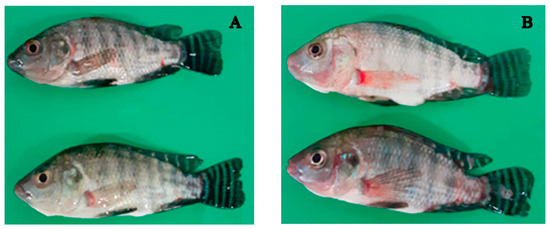
Figure 1
Open AccessArticle
Inulin Supplementation in Diets for Tropical Gar (Atractosteus tropicus) Larvae: Effects on Growth, Survival, and Digestive and Antioxidant Enzyme Activities
by
Eduardo De La Cruz-Marín, Rafael Martínez-García, Jenny F. López-Hernández, Otilio Méndez-Marín, Susana C. De la Rosa-García, Emyr S. Peña-Marín, Dariel Tovar-Ramírez, Cesar A. Sepúlveda-Quiroz, Graciela M. Pérez-Jiménez, Luis D. Jiménez-Martínez, Gloria G. Asencio-Alcudia and Carlos A. Álvarez-González
Aquac. J. 2023, 3(1), 43-55; https://doi.org/10.3390/aquacj3010006 - 03 Mar 2023
Cited by 2
Abstract
The effect of adding inulin to balanced diets for tropical gar (Atractosteus tropicus) larvae on growth, survival, digestive enzyme activity, and antioxidant activity was evaluated. The diets were supplemented with 0.5, 1.0, 1.5, 2.0, and 2.5% inulin in addition to a
[...] Read more.
The effect of adding inulin to balanced diets for tropical gar (Atractosteus tropicus) larvae on growth, survival, digestive enzyme activity, and antioxidant activity was evaluated. The diets were supplemented with 0.5, 1.0, 1.5, 2.0, and 2.5% inulin in addition to a control diet (0% inulin). A total of 1800 larvae of A. tropicus distributed in 18 tanks were used; the larvae were fed five times a day (8:00, 11:00, 13:00, 15:00, and 18:00) with Artemia nauplii from the absorption of the yolk (from 3–7 days after hatching, DAH) up to 10 DAH, which was mixed with the experimental feeds from 8–11 DAH (co-feeding) and exclusively with the balanced diets from 12 DAH to 21 DAH. Larvae fed the control diet (0% inulin) had the highest growth in weight and length, followed by fish fed the 2.5 and 2.0% inulin inclusions. However, survival showed that the fish fed with the inclusion of 2.5% inulin had the highest percentage (34.7%) compared to the rest of the treatments. On the other hand, the highest digestive enzymatic activities (acid and alkaline proteases, amylase, and lipase) were recorded in the larvae fed with 2 and 2.5% inulin. Likewise, catalase (CAT) and superoxide dismutase (SOD) activities were higher in larvae fed the control diet with 0% inulin. Supplementation of 2.0% to 2.5% inulin in the diet is recommended for A. tropicus larvae as it improves survival and digestive enzyme activity during this early stage of life.
Full article
(This article belongs to the Special Issue Feeding Habits and Digestive Physiology of Aquaculture Fishes)
►▼
Show Figures
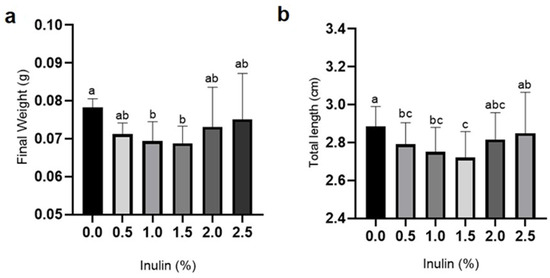
Figure 1
Open AccessEditor’s ChoiceArticle
Effect of Different Culture Methods on Growth and Survival of the Snout Otter Clam, Lutraria philippinarum, in Bai Tu Long Bay, Vietnam
by
Cao Truong Giang, Sarah Ugalde, Vu Van In, Tran Thi Thuy, Tran The Muu, Vu Thi Huyen, Dang Thi Lua, Tran Thi Nguyet Minh, Trinh Dinh Khuyen, Le Van Khoi and Vu Van Sang
Aquac. J. 2023, 3(1), 32-42; https://doi.org/10.3390/aquacj3010005 - 14 Feb 2023
Cited by 1
Abstract
This is the first study to examine the effect of three different cultivation methods (bottom-tray culture, suspended-tray culture, and beach/bottom culture) on the growth and survival rates of the snout otter clam, Lutraria philippinarum, after 12 months of grow-out cultivation from seed
[...] Read more.
This is the first study to examine the effect of three different cultivation methods (bottom-tray culture, suspended-tray culture, and beach/bottom culture) on the growth and survival rates of the snout otter clam, Lutraria philippinarum, after 12 months of grow-out cultivation from seed to commercial size. Analyses included weight, survival, shell size, and total fat. Although the results showed limited differences in growth among cultivation methods, survival rates were significantly different among three different culture methods. The bottom-tray cultivation method had the highest survival rate (76.5%), compared with suspended-tray cultivation (31.6%) and beach/bottom cultivation (52.5%). This demonstrates that the most suitable method for commercial snout otter clam farming is cultivation trays placed on the bottom of the substrate. Improving commercial farming of the species will support the development and expansion of aquaculture in Vietnam and elsewhere, while reducing the harvest pressure on wild populations.
Full article
(This article belongs to the Special Issue Feature Papers in Aquaculture 2022)
►▼
Show Figures
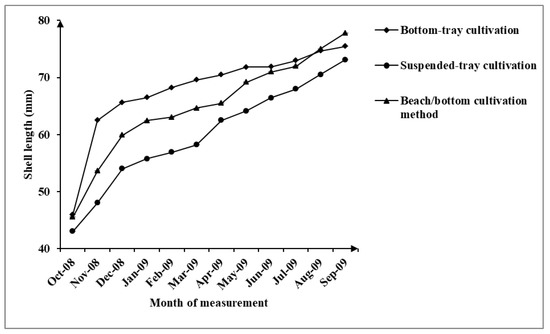
Figure 1
Open AccessArticle
Influence of Body Weight and Water Temperature on Growth in Ragworm Hediste diversicolor
by
Felipe Aguado-Giménez, Benjamin García-García, Ignacio Eduardo Martín and Inmaculada Rasines
Aquac. J. 2023, 3(1), 19-31; https://doi.org/10.3390/aquacj3010004 - 28 Jan 2023
Cited by 3
Abstract
Cultivation of the common ragworm—Hediste diversicolor—has attracted a great deal of interest in recent years. Growth optimization is a key aspect for its intensive production. We have assessed the effect of body weight (Bw) and temperature (T) on growth-related parameters in
[...] Read more.
Cultivation of the common ragworm—Hediste diversicolor—has attracted a great deal of interest in recent years. Growth optimization is a key aspect for its intensive production. We have assessed the effect of body weight (Bw) and temperature (T) on growth-related parameters in common ragworm using correlation and multiple regression analyses. We used ragworms of 13 different weight classes in 15-day growing assays at 12 different temperature values. These polychaetes were stocked at a density of 1000 individuals m−2, and fed with commercial fish feed. Our results show that growth increases with T; when expressed as an absolute growth rate (AGR), growth increases as Bw increases; and when expressed as a specific growth rate (SGR), growth decreases as Bw increases. A change in the growth pattern was observed from an individual Bw of about 400 mg. Simulations performed with the equations that provided the best fit revealed that optimum T for growth changes with Bw, so that in individuals below 400 mg, optimum T is 24.9 °C, and above this temperature growth decreases. In individuals above 400 mg, growth increases slightly with temperature, but as weight increases, the effect of temperature on growth is less and less, and from a weight of 1050 mg, growth decreases as temperature increases. Mortality increases significantly at temperatures above 22 °C, especially in individuals with a Bw above 400 mg. Simulations of individual growth showed that up to 400 mg growth is quite fast at warmer temperatures, but from 400 mg to 1000 mg, the influence of T on growth rate is not significantly relevant in operational terms. This study demonstrated the huge usefulness of growth modelling for production planning.
Full article
(This article belongs to the Special Issue Feature Papers in Aquaculture 2022)
►▼
Show Figures
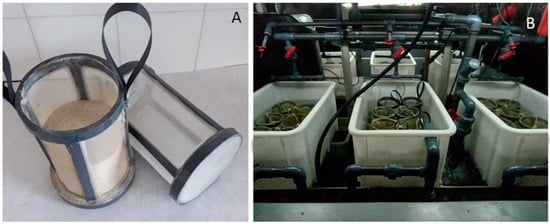
Figure 1
Open AccessEditorial
Acknowledgment to the Reviewers of Aquaculture Journal in 2022
by
Aquaculture Journal Editorial Office
Aquac. J. 2023, 3(1), 18; https://doi.org/10.3390/aquacj3010003 - 11 Jan 2023
Abstract
High-quality academic publishing is built on rigorous peer review [...]
Full article
Open AccessArticle
Stress and Disease Resistance in Crayfish (Procambarus clarkii) Breed “Huachizhen-1”
by
Xin Ren, Lijing Xiong, Yunfei Tan, Xiaoyu Liu, Xi Zhu and Xufeng Bai
Aquac. J. 2023, 3(1), 7-17; https://doi.org/10.3390/aquacj3010002 - 26 Dec 2022
Abstract
Stress and disease are critical factors hindering the industrial development of red swamp crayfish (Procambarus clarkii). Breeding crayfish with stress- and disease-resistant characteristics can overcome these limitations and promote their industrial development. In this study, the crayfish breed F3, which exhibits
[...] Read more.
Stress and disease are critical factors hindering the industrial development of red swamp crayfish (Procambarus clarkii). Breeding crayfish with stress- and disease-resistant characteristics can overcome these limitations and promote their industrial development. In this study, the crayfish breed F3, which exhibits rapid growth and a favoured haplotype combination of the immune genes R, ALF, and crustin2, encoding the Toll-like receptor, anti-lipopolysaccharide factor, and antimicrobial peptide, respectively, were selected as parents to breed offspring (the selected group (SG)). The genotype, stress resistance, and disease resistance of crayfish in the SG and unselected group (USG) were compared. The results showed that the ratio of the favoured haplotype was higher in the SG crayfish than in the USG crayfish, leading to stronger stress and disease resistance. Compared to that of the USG crayfish, the mortality of the SG crayfish subjected to stress during eight days of transport and challenged with bacteria (Aeromonas hydrophila or Vibrio parahaemolyticus) or white spot syndrome virus were significantly reduced by 60% and 20%, respectively (p < 0.05). Based on these results, the stress- and disease-resistant SG crayfish were named the “Huachizhen-1” breed. Additionally, the ratio of the unfavoured homozygous genotypes of R, ALF, and crustin2 sharply decreased, whereas those of the heterozygous genotypes increased together with stress and disease resistance during crayfish maturation under natural conditions, indicating that the heterozygotes of these genes also exhibit strong stress and disease resistance. All of this taken together, the crayfish breed “Huachizhen-1” may be applicable for improving stress and disease resistance and the production of crayfish.
Full article
(This article belongs to the Special Issue Feature Papers in Aquaculture 2022)
►▼
Show Figures
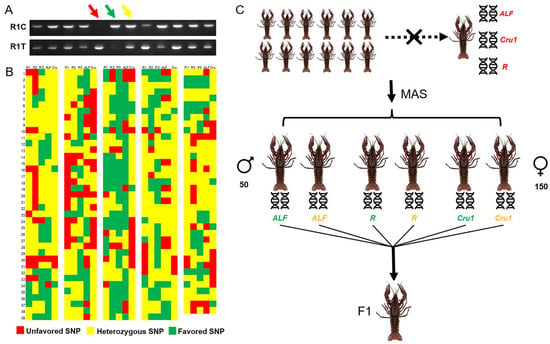
Figure 1
Highly Accessed Articles
Latest Books
E-Mail Alert
News
Topics
Topic in
Aquaculture Journal, Fishes, Microorganisms, Water
Women in Aquaculture Research
Topic Editors: Camino Ordás, Patrícia Díaz-RosalesDeadline: 30 June 2024
Topic in
Aquaculture Journal, Fishes, Foods, Nutrients, Oceans
Future Foods from the Sea
Topic Editors: Haohao Wu, Yanbo Wang, Na SunDeadline: 5 September 2024
Topic in
Animals, Aquaculture Journal, Biology, Fishes
The Importance of Fish Phenotype in Aquaculture, Fisheries and Conservation
Topic Editors: Zonghang Zhang, Xiumei ZhangDeadline: 31 January 2025





